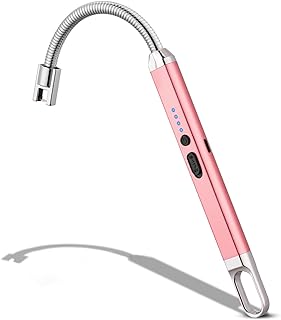Beyond the Flick: A Comprehensive Guide to Lighters
Lighters. Seemingly simple objects, yet they hold a world of variety and history. From the humble Bic to the intricate Zippo, lighters are more than just a way to light a flame. They are tools, accessories, and even collectibles. Let's delve into the fascinating world of lighters, uncovering their history, types, functions, and how to choose the perfect one for your needs.
I. Origins and History:
* Ancient Spark: The earliest known lighter-like device was the "fire piston" �C a device used to generate heat by compressing air. It dates back to ancient China, where it was used for igniting gunpowder.
* The Match Revolution: In the 19th century, the invention of the match revolutionized fire-starting. However, these early matches were unreliable and often dangerous.
* The First Lighters: The first recognizable lighter was invented by French inventor, Fran?ois Desormes, in 1826. It used flint and steel to generate sparks.
* The Modern Era: The invention of butane lighters in the 20th century brought about a revolution in portability and convenience.
II. Types of Lighters:
* Flint & Steel:
* Classic Zippo: The iconic Zippo, known for its reliable operation and refillable design.
* Traditional Pocket Lighters: Many variations exist with varying sizes, designs, and features.
* Flint Wheel Lighters: Utilize a spinning wheel to create sparks against a flint, usually found in BBQ lighters.
* Butane Lighters:
* Disposable: The most common type, featuring a single-use cartridge.
* Refillable: Allow for refilling and offer a more sustainable option.
* Torch Lighters: Produce a powerful and focused flame, ideal for grilling and soldering.
* Plasma Lighters: Utilize electric arc to generate a flame, offering windproof and eco-friendly operation.
* Other Types:
* Electric Lighters: Powered by batteries, perfect for windproof and eco-friendly operation.
* Candle Lighters: Designed specifically for lighting candles, often with long, slender necks.
* Kitchen Lighters: Feature safety features like child-resistant mechanisms, perfect for stovetops.
III. Features to Consider:
* Functionality: Choose a lighter that suits your needs �C for everyday use, windproof conditions, or specific tasks like cooking.
* Durability: Consider the material and build quality for longevity.
* Refilling: Assess if refillable or disposable options better suit your needs.
* Safety: Choose lighters with child-resistant mechanisms and safety features.
* Aesthetics: Find a design that fits your personality and preferences.
IV. How to Choose the Right Lighter:
* Everyday Use: Disposable butane lighters or refillable lighters with a simple design are ideal.
* Camping & Outdoors: Windproof lighters, like torch or plasma lighters, are essential.
* Cooking: Kitchen lighters offer safety features and long reach for stovetops.
* Collecting: Explore vintage lighters or limited edition models from brands like Zippo or Dunhill.
V. Maintaining Your Lighter:
* Regular Cleaning: Clean your lighter's nozzle and wick regularly to prevent clogging.
* Refueling: Follow the manufacturer's instructions for proper refilling techniques.
* Storage: Keep your lighter in a dry, cool place away from direct sunlight.
VI. Beyond the Flame:
* Lighters as Accessories: Lighters can be stylish accessories, with different designs and finishes to personalize your style.
* Lighters as Collectibles: Some lighters, especially vintage or limited edition models, become valuable collectibles.
* Lighters as Tools: Lighters can serve as emergency fire starters, sparking creativity and survival skills.
Conclusion:
The world of lighters is a fascinating blend of practicality and style. With this guide, you can navigate the diverse options and choose the perfect lighter for your needs. Remember to enjoy the simple pleasure of a flick and the warmth of a flame.


